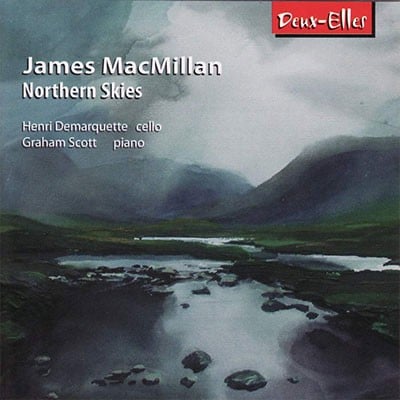Boosey & Hawkes
I Face
II Image
The work was commissioned by the Bath and Queensland Biennial Festivals of 1999 and specially written for its dedicatee Raphael Wallfisch. The most important element in the Sonata’s two movements is the interval of a minor 3rd, from which emerges much of the music’s material and which binds the ideas together.
The first movement Face begins with a lyrical, cantabile melody for the cello accompanied by delicate trills, shimmering tremolandi and scurrying scales on the piano. The cello gradually descends to its lowest register with a brooding and introspective theme. Against this the piano has a completely contrasting idea – an innocent and simple theme like a child’s clockwork musical toy.
The cello writing becomes faster, evoking the dance lilt of a jig, but the piano gradually becomes more ominous. This leads to a central "fantasy" section of violence and brutality with strange, surprising sounds coming from both instruments.
Another dance-like episode follows for pizzicato cello, punctuated by brittle clusters on the piano. Towards the end of this section a short, keening, two-note figure emerges and provides the basis of the final section. The cello rises anxiously and expressively using only five notes (across a number of octaves) while the piano material is based on a martial idea that becomes increasingly agitated. The climax of this interaction leads to a short coda in which the music winds down through a number of earlier ideas.
The second movement Image is a mirror image of Face. The structural procession of elements is inverted, and the roles of the instruments are reversed. Even some of the themes are retrograded. The coda brings the music back to the melodic and tonal simplicities of the opening bars of the first movement, before fading serenely to nothing.
James MacMillan, 1999
Reproduction Rights
This programme note can be reproduced free of charge in concert programmes with a credit to the composer
"One of MacMillan's main strengths is in finding new perspectives for old musical genres, and there are echoes here of the visionary force and depth of Bartók's Second Violin Sonata..."
Gramophone

Henri Demarquette vcl / Graham Scott pft
Deux-Elles DXL 1115

